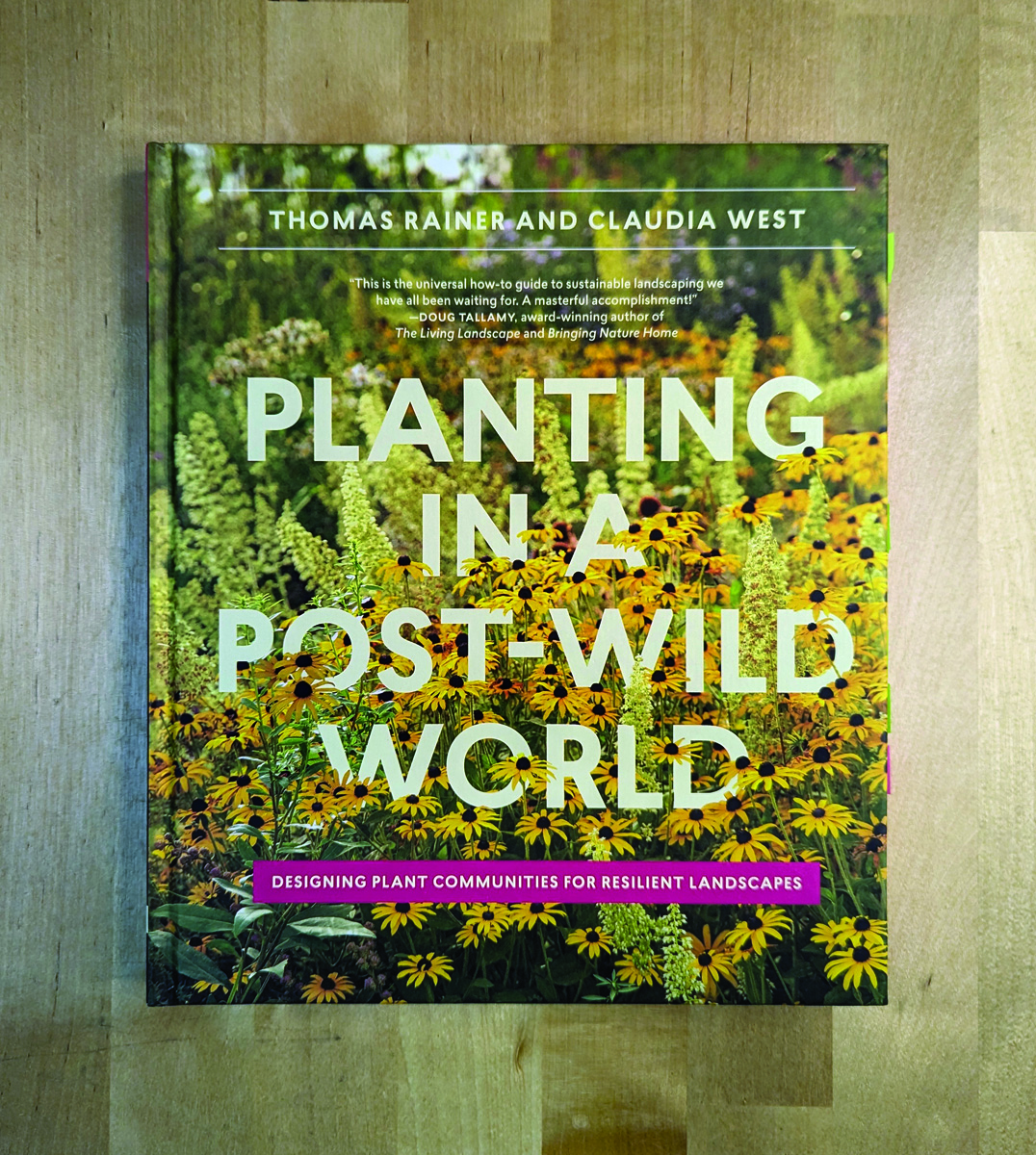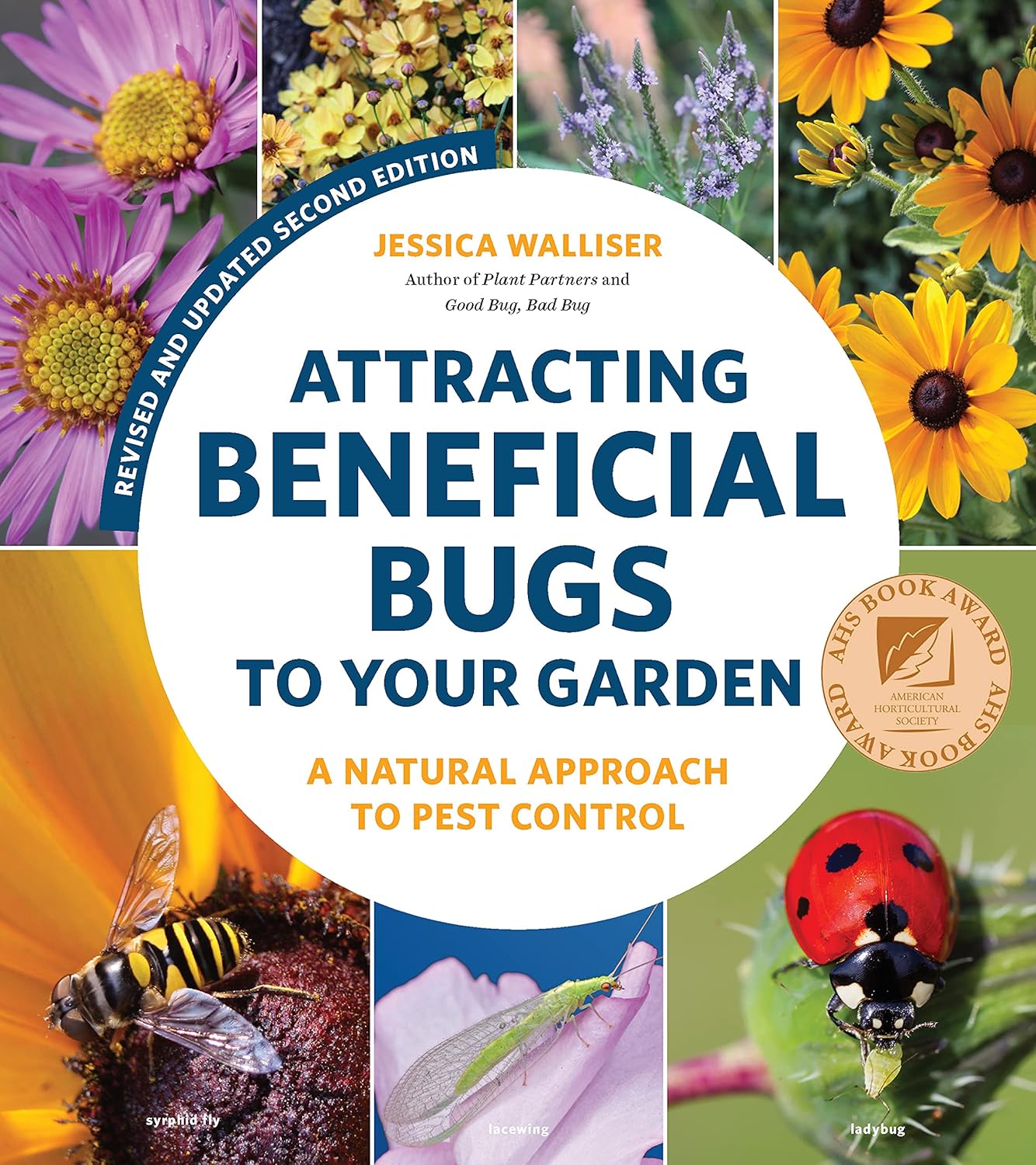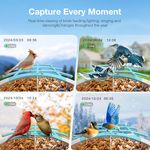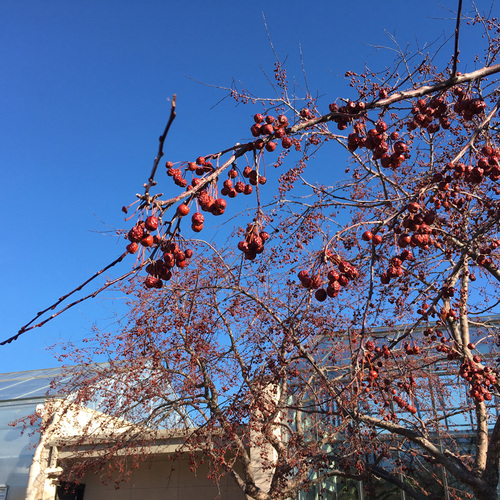Of all the time I spend in my gardens, the moments I find most memorable and meaningful are when the garden is enjoyed by others. Though typically brief, the moments—like photographic slides—mark seasonal progression, highlight the value of my labor, and crystallize ephemeral scenes that color how I remember my hard work. These visits are often from gardener friends, but sometimes I get a surprise drop-in from a variety of wild critters. Last weekend a perturbed screech owl desperately tried to escape a bevy of harrying songbirds by clambering into my upright juniper. Unfortunately for the owl, it didn’t work; the harrying continued!
I’ve grown to particularly enjoy such unexpected appearances, especially those by birds, whose appearances, disappearances, and range of behaviors do a particularly good job of marketing the steady march of seasonal change and provide so much animation in garden spaces. It’s nice to see that your garden provides a feast beyond the visual, too. Selecting plants that supplies food for birds during the quieter winter months makes for easy winter interest in the garden and doesn’t add any cost to your garden practice. It also skirts the headaches associated with traditional bird feeders, ranging from cost of feed, increased rodents in the yard, and the possible increased spread of bird diseases.
Learn more: Plants for the Birds in Your Region
Broadly speaking, I approach gardening for winter bird feeding with three main groups of plants:
- Shrubs and trees with persistent berries
- Native grasses
- Annual and perennial flowers that produce lots of seed, especially in the aster (sunflower) family
Shrubs and trees
Persistent berries are those that hang on the plant after maturing. In most cases, such fruits dry on the plant and remain palatable for birds well into winter months as food becomes increasingly scarce. Chief among these are persistent crabapples (Malus spp. and cvs., Zones 3–9). Though not native, they are not problematic in wild spaces in the Rockies, and make easygoing, beautiful additions to yards with prodigal amounts of small pink, orange, or red fruits. They are also a piece of cake to find at your local nursery and are hardy to Zone 4. For those not in the market for a small tree, other options include many of our native shrubs, such as grape hollies (Berberis aquifolium, Zones 4–8), three-leaf sumac (Rhus trilobata, Zones 3–8), and smooth sumac (Rhus glabra, Zones 3–9).
Top picks:
- Crabapples (Malus spp. and cvs., Zones 3–9)
- Grape hollies (Berberis aquifolium, Zones 4–8)
- Three-leaf sumac (Rhus trilobata, Zones 3–8)
- Smooth sumac (Rhus glabra, Zones 3–9)
Additional shrubs and trees providing good winter forage for seed-eating birds:
- Dwarf leadplant; small shrub, low water (Amorpha nana, Zones 3–7)
- Artemisia species
- Berberis species, including:
- Juniperus species, including:
- Pinus species (pines, ranging in size, hardiness, and water requirements)
Native Grasses
Often overlooked when considering birds, native grasses produce significant amounts of energy-rich seeds that many songbirds relish. A large number of our native grasses fit this bill, but few do so with such broad appeal as switchgrass (Panicum virgatum, Zones 4–9), which provides a loose and airy spray of plump seeds above its foliage. Native across middle America, switchgrass plants are a cinch to grow so long as they receive modest irrigation, and are quite long-lived. As warm-season growers, they break dormancy in very late spring and flower in late summer.
Cultivars range from the petite, roughly 3-foot-tall ‘Shenandoah’ and ‘Cheyenne Sky’ to the downright massive, 6-foot-plus ‘Heavy Metal’ and ‘Dallas Blues’. None are aggressive seeders, and all are bunch grasses, so you don’t have to worry about them getting out of hand (or the bed you put them in). A number of cultivars of this grass feature attractive, red-blushed or metallic-silver foliage as well.
Top pick:
Switchgrass (Panicum virgatum, Zone 4)
- ‘Shenandoah’, ‘Cheyenne Sky’, ‘Heavy Metal’, and ‘Dallas Blues’
Additional native grasses providing winter forage for seed-eating birds:
- Big bluestem; moderate water (Andropogon gerardii, Zones 4 to 9)
- Bouteloua species
- Little bluestem; moderate water (Schizachyrium scoparium, Zones 3–9)
- Golden feather/prairie grass; moderate to low water (Sorghastrum nutans, Zones 4–9)
Annuals and Perennials:
Grasses and fruits aside, many gardens and wildflowers provide good forage for our birds. Of all the plants I grow, one group remains a favorite: the sunflower family. This family can be quickly identified as having flowers that look like sunflowers (large or small), daisies, or aster-type flowers. They produce huge amounts of nutritious seed, much of which lasts into winter.
For sites with moderate soil moisture or those with irrigation, frost aster (Symphyotrichum pilosum, Zones 3–9) makes an attractive, bird-valued option. The species keeps a low profile in spring but reaches 2 to 4 feet high by the time it blooms in early and mid-fall, topping its narrow, dark green leaves and stems with hundreds of dainty, white daisy-like flowers long after most plants have thrown in the towel for the year. The species can be seedy in soil conditions it finds favorable, especially soils with lots of irrigation or reliable moisture. So far, mine have been well-behaved in my minimally irrigated home beds, where I can watch juncos bounding beneath them, picking up their very fine, dustlike seed from the soil surface until snow cover settles in midwinter.
Gardeners looking for something bigger can opt for larger perennial sunflowers: ‘Dakota Sunshine’ (Helianthus maximiliana ‘Dakota Sunshine’, Zones 3–8) is a particularly nice option for our region. While many perennial sunflowers hit their stride in early to mid-fall—by which time we often have a killing frost, preventing a bloom—‘Dakota Sunshine’ begins flowering in late summer. The selection, a joint introduction by High Country Gardens and Lauren Springer, reaches about 5 feet tall and produces a generous spray of saturated yellow “miniature sunflowers” in late summer. ‘Dakota Sunshine’ can self-sow, sometimes enthusiastically, depending on the conditions in your garden. So if in doubt, reserve this and other perennial sunflowers with similar tendencies for the “back 40,” where such behavior is welcome. You may have noticed a pattern with bird-feeding plants—many that provide the best forage are making the most seeds!
Top picks:
- Frost aster (Symphyotrichum pilosum, Zones 3–9)
- Maximillian sunflower ‘Dakota Sunshine’ (Helianthus maximiliana ‘Dakota Sunshine’, Zones 3–8)
Additional perennials and annuals providing good winter forage for seed-eating birds:
- Anise hyssop; perennial, moderate water (Agastache foeniculum, Zones 3–8)
- Prairie sage; perennial, low to moderate water (Artemisia ludoviciana, Zones 3–8)
- Rocky Mountain bee plant; annual, low water (Cleomella serrulata, most zones)
- Narrow-leaf coneflower; perennial, low water (Echinacea angustifolia, Zones 3–8)
- Purple coneflower; perennial, moderate water (Echinacea purpurea, Zones 4–9)
- Annual sunflower; annual, low water (Helianthus annuus, most zones)
- Bee balm; perennial, moderate water (Monarda fistulosa, Zones 4–9)
- Lemon bee balm; annual, moderate water (Monarda citriodora, most zones)
- Rough goldenrod; perennial, low water (Solidago rigida, Zones 3–8)
- Asters; perennial, moderate water (Symphyotrichum species, Zones 4–8)
- Black-eyed Susans; perennial, moderate water (Rudbeckia hybrids and species, Zones 4–9)
- Prairie coneflower; perennial, low water (Ratibida pinnata, Zones 4–8)
Discuss this article or ask gardening questions with a regional gardening expert on the Gardening Answers forum.
For more Mountain West regional reports, click here.
Bryan Fischer lives and gardens at the intersection of the Great Plains and the Rockies. He is a horticulturist and the curator of plant collections for a local botanic garden.
All photos unless otherwise noted: Bryan Fischer
Fine Gardening Recommended Products

Planting in a Post-Wild World: Designing Plant Communities for Resilient Landscapes
Fine Gardening receives a commission for items purchased through links on this site, including Amazon Associates and other affiliate advertising programs.
Featuring gorgeous photography and advice for landscapers, Planting in a Post-Wild World by Thomas Rainer and Claudia West is dedicated to the idea of a new nature—a hybrid of both the wild and the cultivated—that can nourish in our cities and suburbs.

Attracting Beneficial Bugs to Your Garden, Revised and Updated Second Edition: A Natural Approach to Pest Control
Fine Gardening receives a commission for items purchased through links on this site, including Amazon Associates and other affiliate advertising programs.
This revised and updated edition of Jessica Walliser’s award-winning Attracting Beneficial Bugs to Your Garden offers a valuable and science-backed plan for bringing balance back to the garden. With this indispensable gardening reference—now updated with new research, insights, and voices—learn how to create a healthy, balanced, and diverse garden capable of supporting a hard-working crew of beneficial pest-eating insects and eliminate the need for synthetic chemical pesticides.

isYoung Birdlook® Smart Bird Feeder with Camera
Fine Gardening receives a commission for items purchased through links on this site, including Amazon Associates and other affiliate advertising programs.
Upgraded Dual Granary Bird Feeder. G11 Smart Bird Feeder with Camera – The upgraded dual granary design allows for separate food dispensing, giving birds the freedom to choose while preserving the food’s original taste. With a 2L extra-large capacity, it reduces the need for frequent refills. The drainage design ensures the food stays dry and prevents spoilage from rain. Ideal as a camera bird feeder for birdwatching enthusiasts. 2K HD Camera & Close-Up Bird Watching. Experience clear bird watching with the G11 smart bird feeder. This bird feeder with camera features a 170-degree wide-angle lens and a 1296P HD camera, ensuring vibrant images and videos. With AI-powered recognition, it can identify over 16,000 bird species (subscription required, first month free) and provides extensive birding knowledge. Its unique design helps attract more birds to your backyard. App Alerts & Super Night Vision. The smart bird feeder camera detects motion within 0.5 seconds and sends instant notifications through the “VicoHome” app. With a 2.4G Wi-Fi connection, you can view real-time updates on bird activity right from your app. The video bird feeder also features night vision, ensuring vibrant images and videos even in low light conditions. Ideal for wild bird feeders, this advanced functionality enhances your bird-watching experience day and night.




